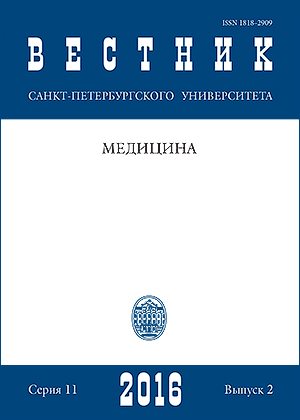ТКАНЕВЫЕ МАТРИЦЫ КЛАПАНОВ СЕРДЦА: СОСТОЯНИЕ ПРОБЛЕМЫ И ПЕРСПЕКТИВЫ
DOI:
https://doi.org/10.21638/11701/spbu11.2016.206Аннотация
Первые успешные протезирования аортального и митрального клапанов сердца были выполнены в 1960 г. соответственно D. Harken и N. Braunwald. В обоих случаях использовались механические протезы, однако спустя всего 10 лет M. Ionescu впервые имплантировал первый биологический клапан человеку. В ходе эволюции биологических клапанных протезов хирургами использовались свиные аортальные, ксеноперикардиальные протезы и человеческие аллографты (свежие и криосохраненные), а в последние полтора десятилетия на вооружение были взяты тканевая инженерия и направленная регенерация тканей. В настоящей статье описаны основные проблемы этой области, проведена сравнительная характеристика различных методик децеллюляризации полулунных клапанов, а также перспективы использования тканевой инженерии для создания атриовентрикулярных клапанных заменителей. Библиогр. 73 назв. Ил. 1.
Ключевые слова:
тканевая инженерия, направленная регенерация, децеллюляризация, децеллюляризированный клапан сердца, тканевая матрица
Скачивания
Библиографические ссылки
References
bladder derived extracellular matrix. Biomaterials, 2008, vol. 29, no. 36, pp. 4775–4782.
Загрузки
Опубликован
Как цитировать
Выпуск
Раздел
Лицензия
Статьи журнала «Вестник Санкт-Петербургского университета. Медицина» находятся в открытом доступе и распространяются в соответствии с условиями Лицензионного Договора с Санкт-Петербургским государственным университетом, который бесплатно предоставляет авторам неограниченное распространение и самостоятельное архивирование.




